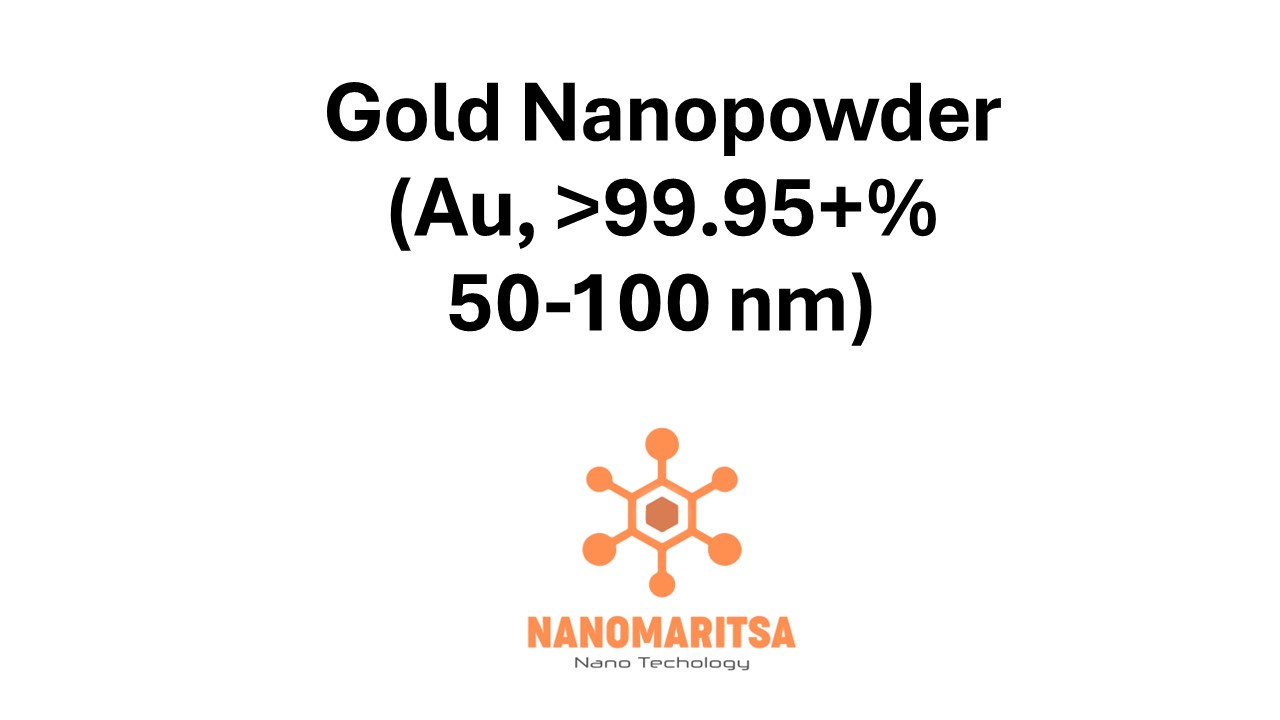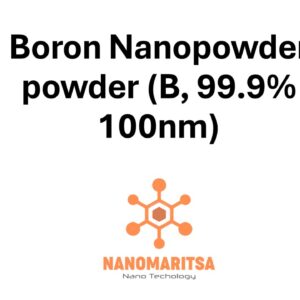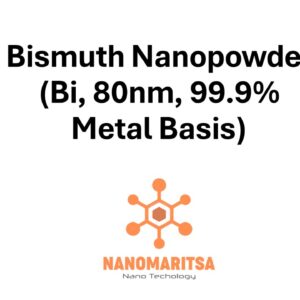Gold Nanopowder (Au, >99.95+%, 50-100 nm) is a highly advanced material composed of gold particles with diameters ranging between 50 and 100 nanometers (nm). This nanopowder combines the exceptional properties of gold—such as excellent conductivity, chemical stability, and optical characteristics—with the benefits of nanoscale materials, offering enhanced material interactions and surface area. Below is a detailed overview:
1. Key Features:
Gold (Au): Gold is a noble metal renowned for its superior electrical and thermal conductivity, resistance to corrosion, and chemical inertness. These characteristics make gold nanopowder indispensable in high-performance and precision applications.
Purity (>99.95+%): The ultra-high purity of over 99.95% ensures minimal impurities, making this nanopowder highly reliable for use in sensitive applications, including biomedical devices, electronics, and catalysis.
Nanoparticle Size (50-100 nm): The particle size range of 50-100 nm provides a balance between nanoscale advantages and manageable physical properties. This size range enhances dispersibility, increases surface interactions, and ensures compatibility with a variety of applications.
Metal Basis: The metal basis guarantees that more than 99.95% of the nanopowder consists of pure gold, ensuring consistency and optimal performance in demanding applications.
2. Properties:
Enhanced Surface Area: The nanoscale dimensions offer a significant increase in surface area compared to bulk materials, enabling improved effectiveness in applications like catalysis and sensing.
Exceptional Conductivity: The outstanding electrical and thermal conductivity of gold is retained, making it suitable for advanced electronic devices and conductive materials.
Chemical Stability: Gold’s natural resistance to oxidation and corrosion ensures longevity and reliability, even in harsh environments or chemical processes.
Biocompatibility: Gold nanopowder’s non-toxic and biocompatible nature makes it ideal for biomedical applications such as drug delivery, implants, and diagnostic tools.
Optical Properties: Gold nanoparticles exhibit unique optical properties, such as localized surface plasmon resonance (LSPR), making them valuable in photothermal therapy, biosensors, and advanced imaging technologies.
3. Applications:
Biomedical Applications: The biocompatibility and stability of gold nanopowder make it a preferred material in drug delivery systems, cancer treatments (e.g., photothermal therapy), and imaging techniques. Its use in medical devices and implants further underscores its versatility.
Electronics and Conductive Materials: Gold nanopowder is essential in the manufacture of high-precision electronic components, conductive inks, and coatings. Its conductivity and nanoscale properties enhance device performance and enable miniaturization.
Catalysis: With a high surface area and excellent reactivity, gold nanopowder serves as an effective catalyst in chemical reactions, including selective oxidation and hydrogenation, as well as in environmental applications.
Sensors: Gold nanoparticles play a critical role in developing highly sensitive chemical and biosensors. Their optical and electronic properties enable accurate detection in diagnostics, environmental monitoring, and industrial processes.
Energy Technologies: Gold nanopowder is utilized in renewable energy applications, such as solar cells and fuel cells, where its conductivity and catalytic properties improve efficiency and performance.
Optical Devices and Plasmonics: The unique optical behaviors of gold nanoparticles make them suitable for use in optical filters, photodetectors, and plasmonic devices. They are also employed in decorative applications due to their vibrant color and durability.
4. Handling and Safety:
Health and Safety Considerations: Although gold nanopowder is generally considered non-toxic, precautions should be taken to avoid inhalation or prolonged skin contact. Use appropriate personal protective equipment (PPE), including gloves, safety goggles, and masks, during handling.
Storage: Store gold nanopowder in a sealed, moisture-free environment to prevent particle aggregation or contamination. A cool, dry, and well-ventilated storage area is ideal for maintaining its stability and usability.
Precautions: Handle gold nanopowder in a controlled setting, such as a fume hood, to prevent airborne dispersion. Ensure proper disposal in compliance with local regulations to minimize environmental impact and ensure safety.
Summary:
Gold Nanopowder (Au, >99.95+%, 50-100 nm) represents an advanced material that combines the intrinsic properties of gold with the unique benefits of nanoscale particles. Its high purity, exceptional conductivity, chemical stability, and biocompatibility make it indispensable across diverse applications, including medicine, electronics, catalysis, and energy. Proper handling and storage are crucial to maximize its potential while ensuring safety and environmental compliance. This nanopowder exemplifies the forefront of material science and innovation, driving advancements in technology and research across multiple industries.
| Measurement (gr) | 1 gram, 5 grams, 25 grams |
|---|






